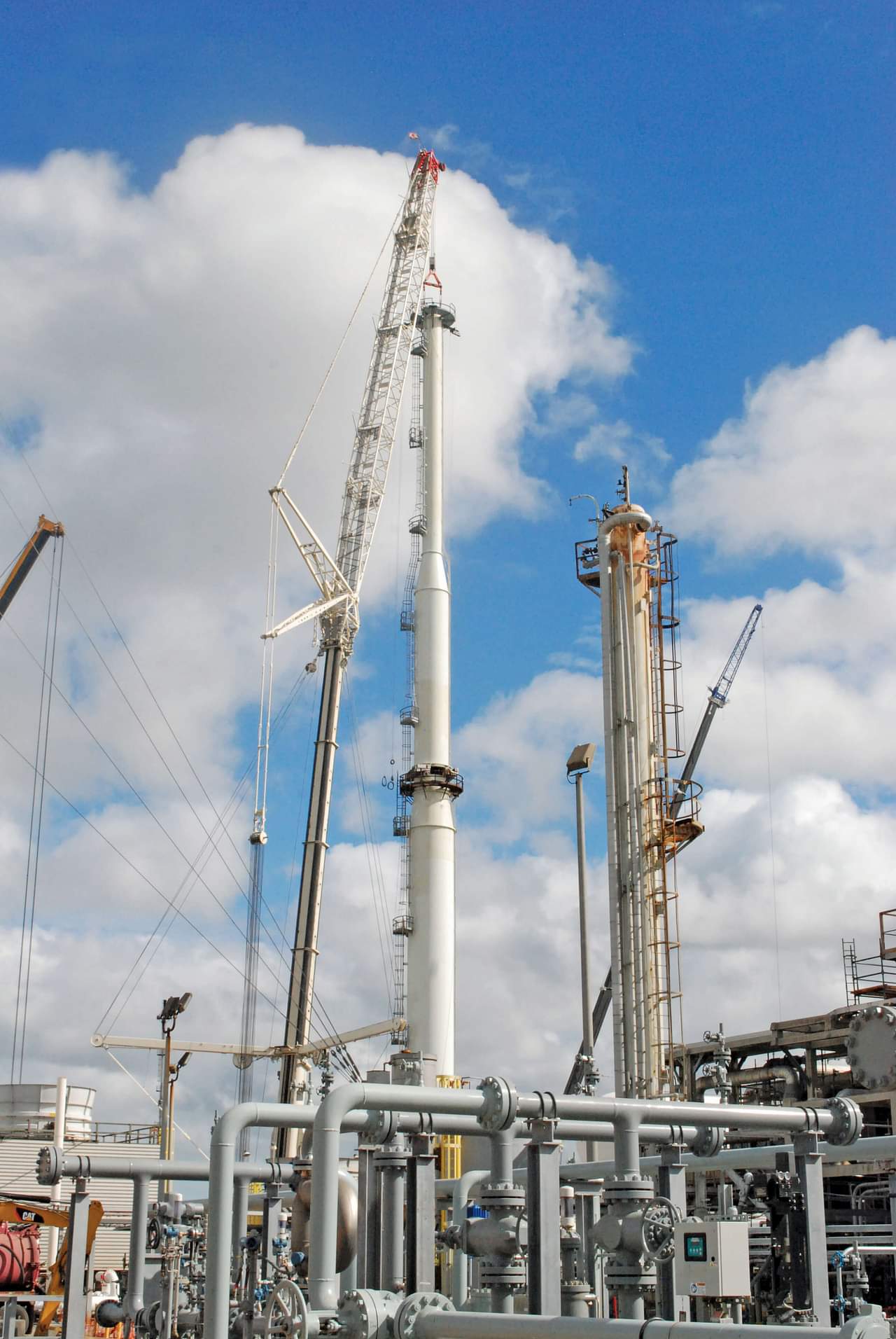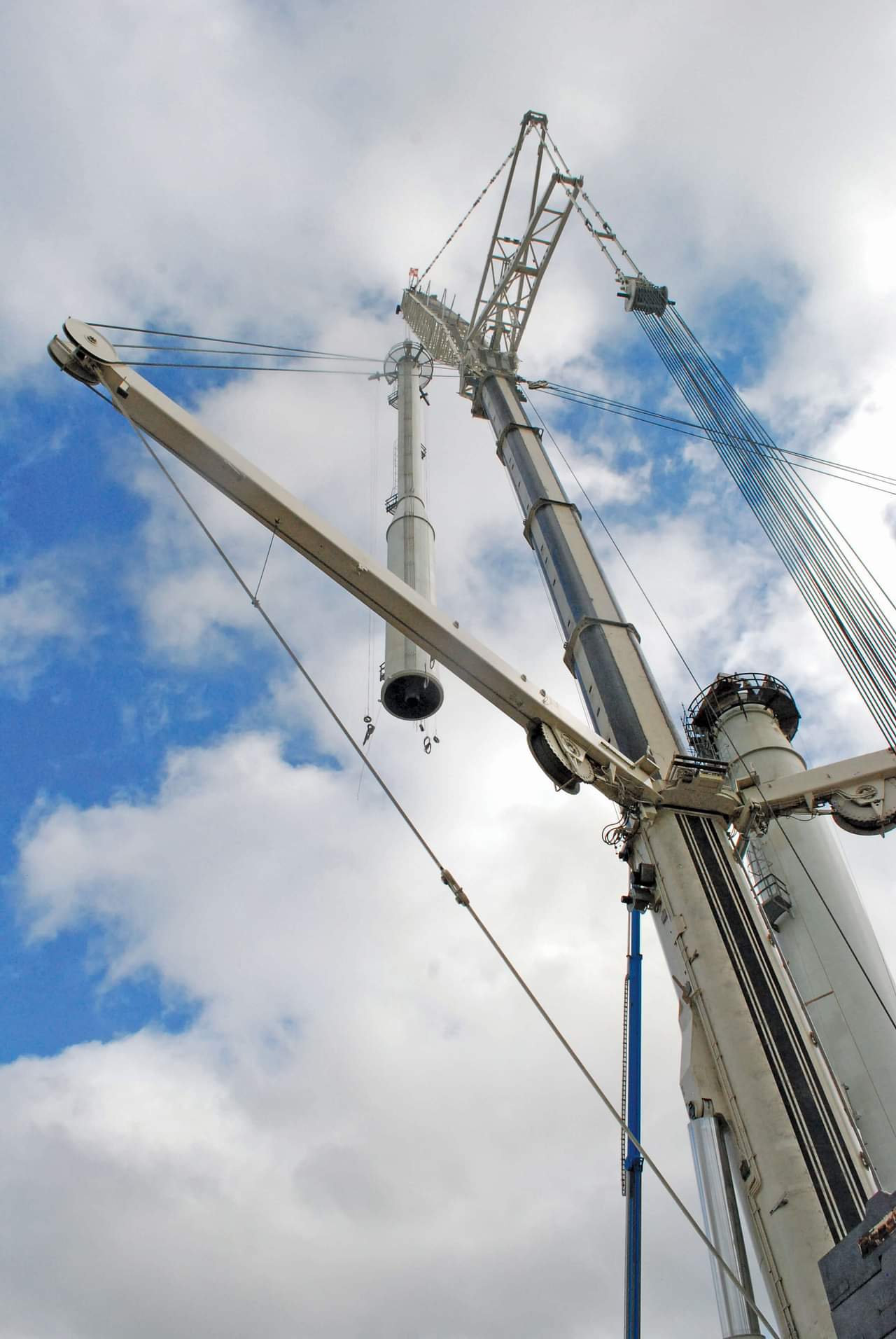Norco Flare Stack Lift
Deep South Crane and Rigging was contracted for a heavy lift project in Norco, Louisiana. The scope of work required for this lift included lifting two sections of a flare stack and the flare tip. To perform these three lifts totaling nearly 300’, Deep South used the 1,320-ton Demag AC-1000 and the 500-ton Liebherr LTM 1400-71, which served as the tail crane.
The first section of the flare stack weighed 239,000 pounds and measured 135’ long. The second section weighed 114,000 pounds and measured 150’ long. The third and final lift of the flare tip weighed 15,000 pounds and measured 12’ long.
One of the key challenges involved in this lift was providing cranes that were both capable of performing these lifts and could be set up with very little space while negotiating a single entrance and exit point. The 1,320 Demag AC-1000 and the 500-ton Liebherr LTM 1400-71 tail crane were able to meet these demands while safely and successfully completing the lifts.
-
First Section of Flare Stack: 239,000 lbs., 135' long
-
Second Section of Flare Stack: 114,000 lbs., 150' long
-
Flare Tip: 15,000 lbs., 12' long



